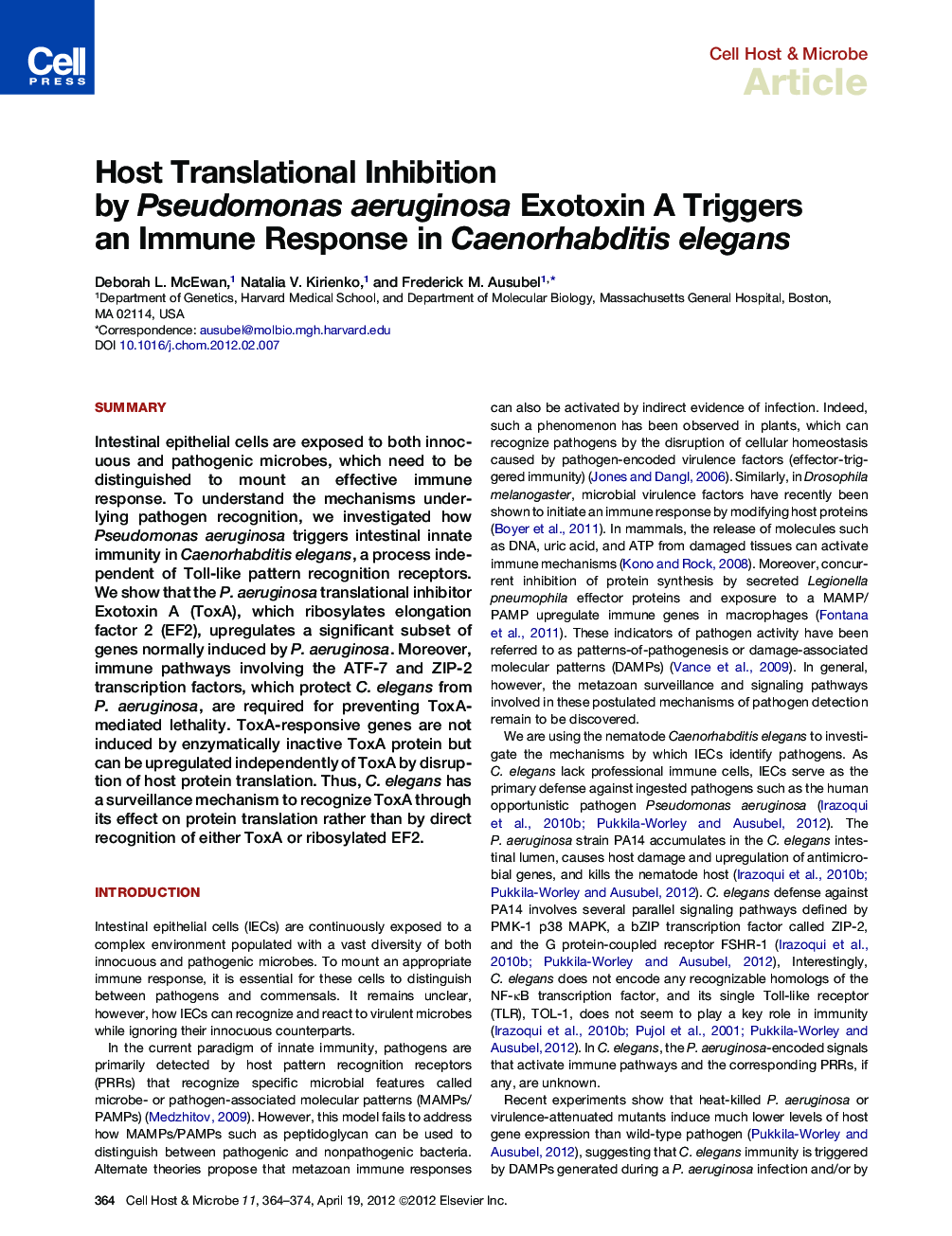| Article ID | Journal | Published Year | Pages | File Type |
|---|---|---|---|---|
| 4361433 | Cell Host & Microbe | 2012 | 11 Pages |
SummaryIntestinal epithelial cells are exposed to both innocuous and pathogenic microbes, which need to be distinguished to mount an effective immune response. To understand the mechanisms underlying pathogen recognition, we investigated how Pseudomonas aeruginosa triggers intestinal innate immunity in Caenorhabditis elegans, a process independent of Toll-like pattern recognition receptors. We show that the P. aeruginosa translational inhibitor Exotoxin A (ToxA), which ribosylates elongation factor 2 (EF2), upregulates a significant subset of genes normally induced by P. aeruginosa. Moreover, immune pathways involving the ATF-7 and ZIP-2 transcription factors, which protect C. elegans from P. aeruginosa, are required for preventing ToxA-mediated lethality. ToxA-responsive genes are not induced by enzymatically inactive ToxA protein but can be upregulated independently of ToxA by disruption of host protein translation. Thus, C. elegans has a surveillance mechanism to recognize ToxA through its effect on protein translation rather than by direct recognition of either ToxA or ribosylated EF2.
► P. aeruginosa Exotoxin A (ToxA) upregulates a subset of C. elegans immune genes ► Multiple immune signaling pathways are required to mount a response to ToxA ► C. elegans immune pathways prevent ToxA-mediated lethality ► C. elegans responds to translational inhibition by ToxA rather than the ToxA protein
